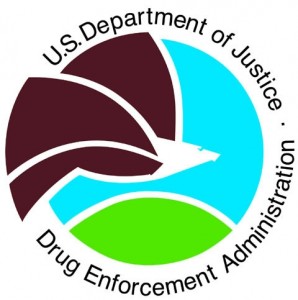 Recent revelations of secretive Drug Enforcement Administration (DEA) data collection, in consort with the NSA, may lead some to wonder: what does the DEA do, anyway? It is a forty-year-old agency under the Justice Department (DOJ), and pursues a mission to enforce laws and regulations that combat illegal use of narcotics and other controlled substances. The DEA investigates and disrupts illegal drug trafficking in cooperation with local, state and federal organizations and agencies of other nations.
Recent revelations of secretive Drug Enforcement Administration (DEA) data collection, in consort with the NSA, may lead some to wonder: what does the DEA do, anyway? It is a forty-year-old agency under the Justice Department (DOJ), and pursues a mission to enforce laws and regulations that combat illegal use of narcotics and other controlled substances. The DEA investigates and disrupts illegal drug trafficking in cooperation with local, state and federal organizations and agencies of other nations.
Morphine, heroine and cocaine were available in the U.S. during the 19th century, but federal efforts to control illegal drugs began in 1915 by the Bureau of Internal Revenue. In the 1960s, the countercultural movement led to rising recreational drug use, and two federal offices were created to respond: the Bureau of Narcotics, to control narcotics and marijuana, and the Bureau of Drug Abuse Control, to fight abuse of depressants, stimulants and hallucinogens. In 1968, President Johnson combined the two bureaus into the Bureau of Narcotics and Dangerous Drugs (BNDD) within DOJ. In 1970, Congress passed the Controlled Substances Act, which classified drugs according to their immediate dangers to consumers, their potential for abuse and addiction, and their potential for medical benefits. BNDD, in collaboration with other agencies, enforced the law, focusing on interstate and international violations. Not satisfied with BNDD’s progress, President Nixon in 1973 declared “an all-out global war on the drug menace.” By executive order that July, Nixon required consolidation and coordination of federal drug control activities by creating the Drug Enforcement Administration. BNDD, the Office of Drug Abuse Law Enforcement, and several other offices were merged into the new unified entity.
The heyday for the DEA came in the 1980s, when the Reagan administration boosted political support for anti-drug efforts and launched drug interdiction initiatives such as Operation Pipeline. In 1986, President Reagan signed National Security Decision Directive 221, elevating drug enforcement to a national security concern. Growth of the agency continued into the 1990s, as new synthetic drugs appeared on the streets and as legal pharmaceuticals increasingly were diverted to the black market. A permanent DEA presence was established in Afghanistan after the 9/11 attacks, to assist military and local campaigns against poppy production.
DEA’s original headquarters were located at 1405 I Street, N.W., in Washington, D.C. As the agency and its headquarters staff grew, DEA began to search for a new headquarters location. Although it considered locations in Arkansas, Mississippi and several abandoned military bases, then–Attorney General Edwin Meese decreed that the headquarters be located near the Attorney General’s office. In 1989, DEA headquarters therefore relocated to 600-700 Army-Navy Drive in Arlington, Va.’s Pentagon City area. In addition to its headquarters offices, the agency has 226 offices organized into 21 divisions throughout the United States, as well as 85 offices in 65 other countries. The agency also maintains its own DEA Academy on the U.S. Marine Corps base at Quantico, Va. (which also houses the FBI Academy).
At its outset, DEA had 1,470 special agents and a budget of less than $75 million. Today, it has nearly 10,000 employees, including almost 5,000 special agents, 500 diversion specialists, 800 intelligence research specialists and 300 chemists. Its enacted budget for FY 2012 was $2.035 billion. President Obama’s FY 2013 budget request for the agency is $2.051 billion, a 0.8% increase from the preceding year.
